If you’ve ever wondered, “Can mice eat through wood?” you’re not alone. These tiny creatures are known for their relentless gnawing habits. Mice have front incisors that never stop growing, so they are constantly on the lookout for things to chew on to keep their teeth filed down.
Mice can squeeze through small openings, even as small as a quarter-inch wide hole, making it easy for them to gain access to your home. Once inside, they can cause damage by chewing through various building materials, including wood, plastic, vinyl, and aluminum. They have a preference for softer materials and tend to avoid chewing through steel wool.
Their ability to chew through wood can lead to structural damage in your home. Additionally, mice have been known to chew through wires, which can pose a serious fire hazard. Electrical short circuits caused by damaged wires can potentially lead to house fires, putting your property and safety at risk.
To prevent mice from entering your home and causing damage, it’s important to take proactive measures. Start by sealing any holes and cracks in your walls, foundation, and other potential entry points. This will help deter mice from finding their way inside.
If you suspect a mouse infestation or are having trouble preventing mice from chewing through wood, it may be time to seek professional pest control services. Experienced professionals can help assess the situation, implement effective control measures, and provide ongoing monitoring to ensure your home remains free from these destructive rodents.
Key Takeaways:
- Mice have front incisors that never stop growing, so they constantly chew to prevent their teeth from overgrowing.
- They can fit through small openings, including quarter-inch wide holes.
- Mice can chew through various building materials, including wood, plastic, vinyl, and aluminum.
- They tend to avoid chewing through steel wool.
- Mice can also chew through wires, leading to potential electrical short circuits and fire hazards.
Understanding Mouse Habits and Behavior
Before we answer the question, it’s important to understand the habits and behavior of these persistent rodents. Mice have front incisors that never stop growing, which means they have a constant need to gnaw and chew to keep their teeth filed down. This behavior is necessary for their dental health but can result in damage to various materials in your home, including wood.
Mice are small and agile creatures that can fit through openings as small as a quarter-inch wide hole. Once inside, they are notorious for their ability to chew through different building materials, including wood, plastic, vinyl, and aluminum. They have a preference for softer materials but are capable of gnawing on harder substances as well.
To make matters worse, mice can also chew through wires, which poses a significant risk of electrical short circuits and potential house fires. This destructive behavior can cause extensive damage to your property and compromise its structural integrity.
It is crucial to take proactive measures to prevent mice from entering your home. Start by sealing any holes, cracks, or gaps in your walls, foundation, windows, and doors. Use materials such as steel wool to block entry points, as mice tend to avoid chewing through it. Additionally, maintain cleanliness and proper storage practices to eliminate potential food sources that may attract these pests.
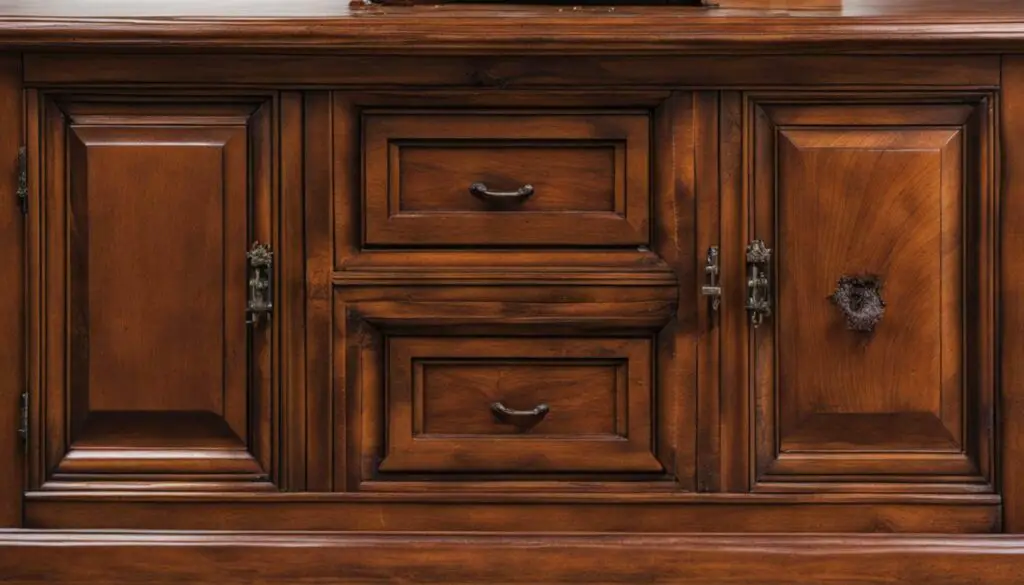
Mice’s Ability to Chew through Wood
Mice have front incisors that never stop growing, which leads them to constantly gnaw and chew on various materials, including wood. These teeth are specifically designed for cutting and gnawing, allowing mice to access food, create nests, and find shelter. Their chewing behavior is not limited to food sources; they also use it as a means of exploration and to mark their territory.
When it comes to wood, mice can cause significant damage. They can easily chew through wooden structures, such as furniture, baseboards, and even walls. Their constant gnawing can weaken the structural integrity of wood, leading to potential safety hazards. Additionally, mice can pose a threat to electrical wiring when they chew through the protective insulation, increasing the risk of electrical short circuits and house fires.
To prevent mice from chewing through wood and causing damage, it is essential to take proactive measures. Start by inspecting your home for any holes or cracks, as mice can squeeze through quarter-inch wide openings. Seal these entry points using materials like caulk or steel wool, as mice tend to avoid chewing through steel wool due to its rough texture. Regularly check for signs of mice infestation, such as droppings, gnaw marks, or shredded materials, and address the issue promptly to minimize the potential damage to wood.
| Wood Protection Tips | Mice Control Methods |
|---|---|
| Ensure proper ventilation to minimize moisture, as damp wood is more prone to damage. | Set up traps, such as snap traps or glue traps, in strategic locations to catch mice. |
| Store firewood away from the house, as it may attract mice looking for shelter and nesting materials. | Use mouse repellents, such as peppermint oil or ultrasonic devices, to deter mice from entering your home. |
| Regularly clean and declutter your home, as mice are attracted to food and hiding spots. | Consult with professional pest control services to effectively manage mouse infestations and protect your wood. |
Conclusion
Understanding mice’s ability to chew through wood is crucial in effectively preventing damage and protecting your home. By implementing preventive measures, sealing entry points, and utilizing appropriate pest control methods, you can minimize the risk of mice infestation and preserve the integrity of your wooden structures. Remember, early detection and swift action are key to maintaining a pest-free environment.
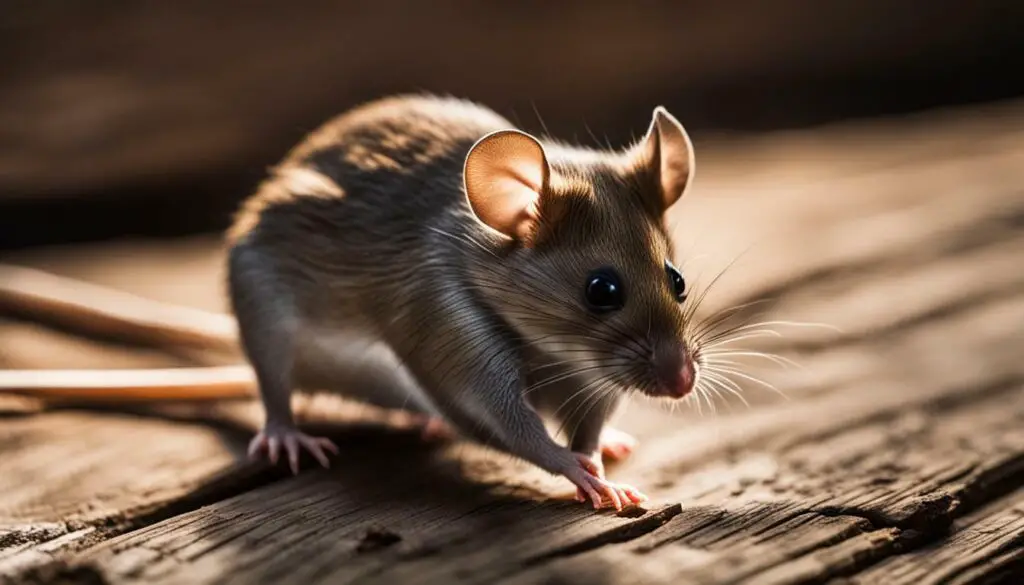
Wood is not the only material that mice can damage with their chewing habits. These small rodents have sharp front incisors that constantly grow, driving them to gnaw on various building materials. Understanding the range of materials that mice can chew through is crucial for safeguarding your home from potential damage.
Mice have the ability to chew through plastic, vinyl, and aluminum, making it essential to protect these materials as well. If you have plastic pipes or vinyl siding, it is important to inspect them regularly for signs of gnawing. Mice can create tiny openings that may lead to leaks or other structural issues. Similarly, aluminum vents or wiring can be vulnerable to their chewing tendencies.
Materials Mice Tend to Avoid
While mice can chew through many materials, there are some substances they tend to avoid. Steel wool, for example, can act as a deterrent due to its rough texture. By placing steel wool around potential entry points, you can make it difficult for mice to gnaw their way into your home.
It is important to note, however, that these preventive measures are not foolproof. Mice are persistent creatures and may still attempt to chew through steel wool if they are desperate for shelter or food. Therefore, utilizing multiple strategies to prevent mice from entering your home is highly recommended.
Remember, if you suspect a mouse infestation, it is best to seek professional pest control services. They have the expertise and tools to effectively manage the infestation and protect your home from further damage. By taking proactive measures and staying vigilant, you can minimize the risk of mice causing destructive damage to your property.
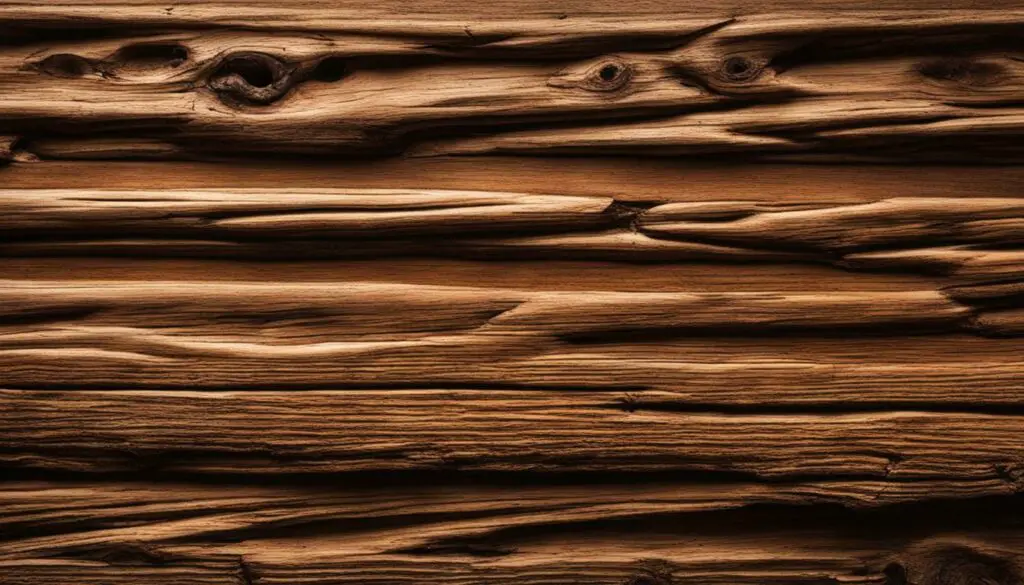
| Material | Vulnerability to Mice Chewing |
|---|---|
| Wood | High |
| Plastic | High |
| Vinyl | Medium |
| Aluminum | Medium |
| Steel Wool | Low |
The Risks of Mice Chewing Through Wood
Mice chewing through wood can lead to significant damage and pose risks to your home. These small rodents have front incisors that constantly grow, so they gnaw and chew on various materials to keep their teeth filed down. Unfortunately, wood is not immune to their destructive chewing habits. If left unchecked, mice can cause structural damage to wooden furniture, doors, baseboards, and even the framework of your home.
In addition to the physical damage, mice chewing through wood can create entry points for other pests, such as termites or carpenter ants. These pests can further weaken the wooden structures, leading to costly repairs. Moreover, mice can chew through electrical wires, which can result in electrical short circuits and increase the risk of house fires. This is a serious safety concern that should not be underestimated.
To prevent mice from chewing on wood and causing these risks, it is crucial to take proactive measures. Start by inspecting your home for potential entry points, such as gaps in doors, windows, or utility openings. Seal these openings with materials that mice cannot easily chew through, like steel wool or caulk. Additionally, store firewood and other wooden materials away from the perimeter of your home to minimize the attraction for mice.
| Preventive Measures | Benefits |
|---|---|
| Seal holes and cracks in your home | Prevents mice from entering |
| Store firewood away from the house | Reduces attraction for mice |
| Use steel wool or caulk to seal openings | Deters mice from chewing through |
| Maintain cleanliness and proper sanitation | Reduces food sources for mice |
If you suspect a mice infestation or if preventive measures are not effective, it is recommended to seek professional pest control services. Experienced pest control technicians can assess the extent of the infestation, implement targeted treatments, and provide ongoing monitoring to ensure effective mouse control. By investing in professional assistance, you can safeguard your home against the risks associated with mice chewing through wood.
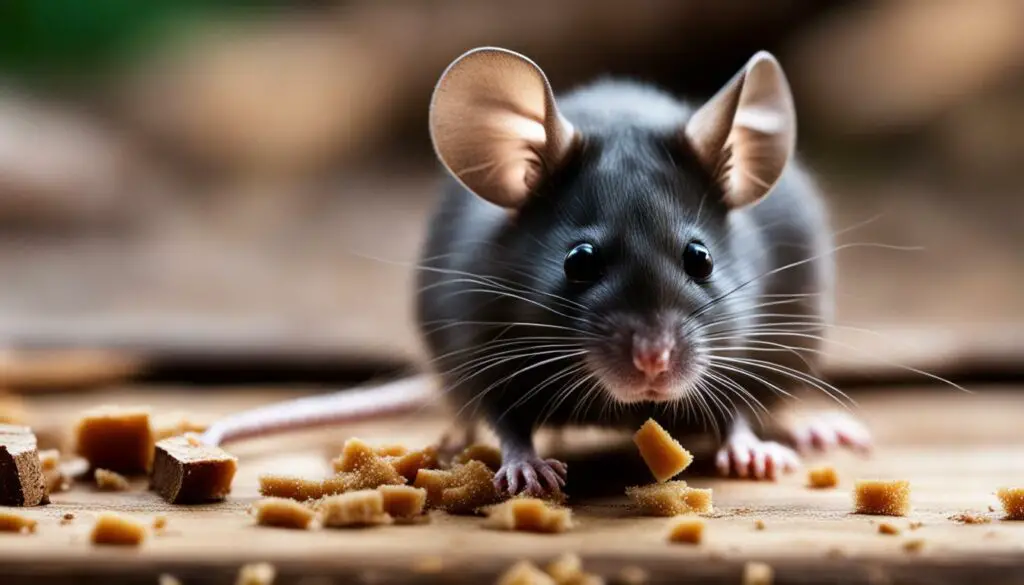
These small steps can go a long way in preventing mice from damaging your wood and protecting your home from potential hazards. Stay vigilant and take action to ensure the safety and integrity of your living space.
If you suspect a mice infestation in your home, it’s important to know the signs, especially in relation to wood. Mice have a natural instinct to chew and gnaw on various materials, including wood. Their front incisors never stop growing, so they constantly chew to keep their teeth filed down. If left unchecked, mice can cause significant damage to wooden structures in your home, such as furniture, cabinets, and baseboards.
One of the telltale signs of a mice infestation in wood is the presence of small, gnawed holes. These holes may be accompanied by wood shavings or sawdust. Mice also leave behind droppings that resemble small black pellets. Additionally, you may notice greasy smudges or stains along baseboards or wooden surfaces, as mice have oily fur that can leave marks.
Another indicator of a mice infestation is the presence of a strong, musty odor. Mice have scent glands that they use to mark their territory, and the smell can be particularly noticeable in confined spaces or areas where mice are active, such as crawl spaces or attics. If you notice any of these signs, it’s important to take immediate action to prevent further damage and address the infestation.
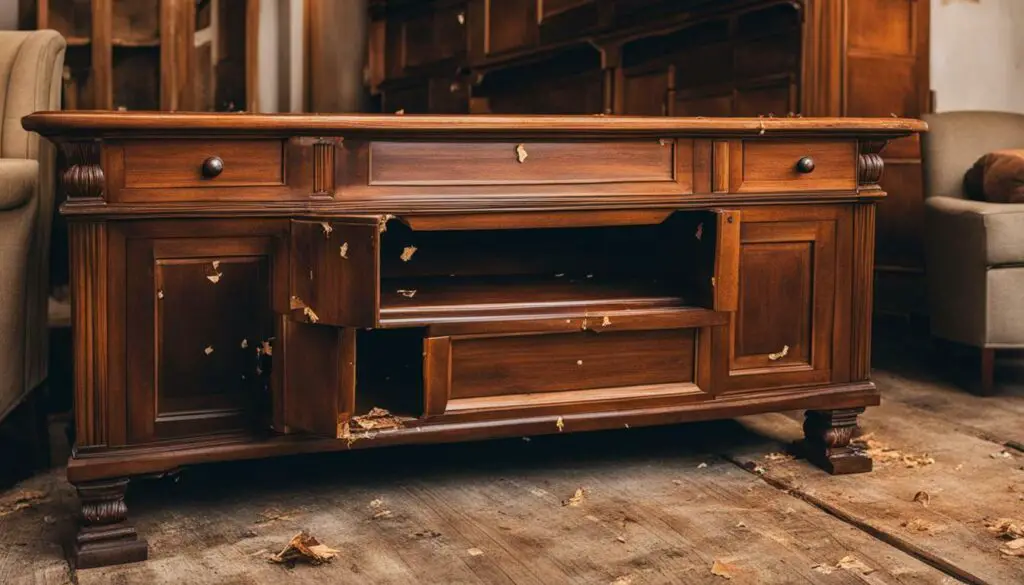
| Signs of Mice Infestation in Wood | Preventing Mice from Chewing Wood |
|---|---|
|
|
Preventing mice from chewing wood requires a proactive approach. Start by inspecting your home for any cracks or holes in the foundation, walls, or windows. Seal these openings using materials like caulk or expanding foam. For larger gaps, use steel wool or wire mesh, as mice tend to avoid chewing through these materials. Additionally, keep tree branches and shrubs trimmed away from your home, as they can serve as bridges for mice to access your property.
It’s also essential to maintain cleanliness and minimize clutter in your home. Regularly clean up food crumbs, secure trash bins, and store food in airtight containers. Keeping a tidy environment reduces the likelihood of attracting mice. If you’re dealing with a persistent infestation or want to ensure comprehensive mouse control, consider seeking professional pest control services. Pest control experts have the knowledge and tools to effectively manage mouse infestations, protecting your home and preserving its wooden structures.
Is Wood a Safe Material Against Mice?
While wood may be a common building material, is it truly safe against the constant gnawing of mice? These small rodents possess front incisors that never stop growing, driving them to constantly chew and gnaw on objects in order to file down their teeth. Unfortunately, wood is not immune to their persistent gnawing habits. Mice can easily chew through wood, causing damages to structures and belongings.
Mice have the ability to chew through various building materials, including wood, plastic, vinyl, and aluminum. Their sharp teeth and determination allow them to create openings in wooden structures, leaving behind unsightly damages and compromising the integrity of the material. It’s important to recognize the risks associated with mice chewing through wood and take appropriate measures to prevent such damages.
| Materials Mice Can Chew Through: |
|---|
| Wood |
| Plastic |
| Vinyl |
| Aluminum |
Preventing mice from chewing through wood requires proactive steps to secure your home. Start by inspecting your property for any holes or cracks that could serve as entry points for these rodents. Seal off any openings with materials that mice find difficult to chew through, such as steel wool or caulk. Additionally, keeping your living space clean and free from food debris will help deter mice from entering your home in the first place.
Professional Pest Control for Wood Protection
If you’re dealing with a mice infestation or want to ensure thorough protection for your wood structures, it’s recommended to enlist the help of professional pest control services. Pest control experts have the knowledge and tools to effectively eliminate mice infestations and implement preventive measures to safeguard your home and belongings from further damages.
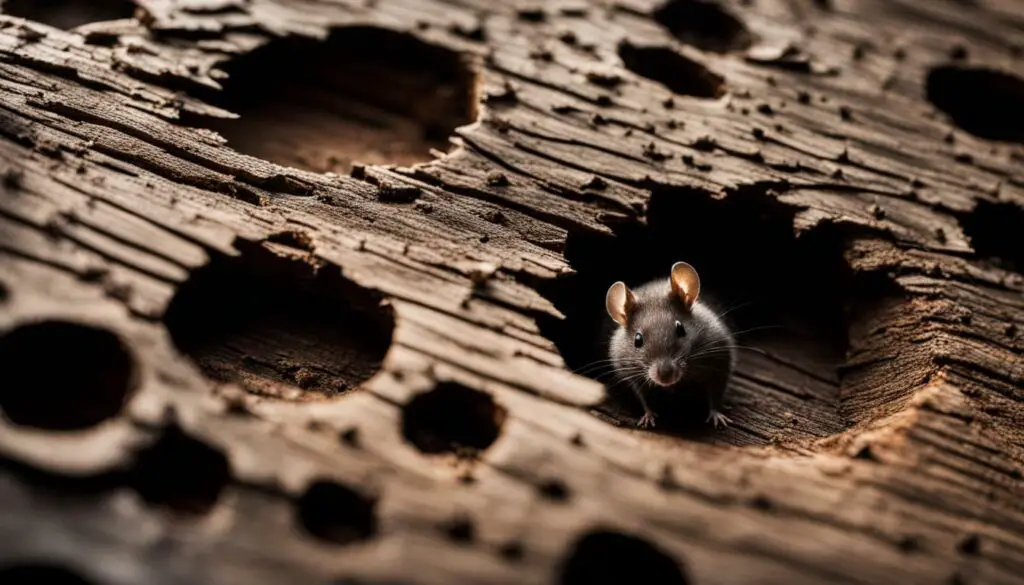
In conclusion, while wood may be a commonly used material, it is not completely safe against the constant gnawing of mice. Understanding the chewing capabilities of mice and taking preventive actions can help minimize wood damages caused by these rodents. Whether it’s securing entry points, using deterrent materials, or seeking professional assistance, it’s important to prioritize the protection of your home against mice infestations and their destructive habits.
Preventing Mice from Chewing Wood
Protecting your wood from mice requires proactive preventive measures. These rodents have front incisors that never stop growing, driving them to constantly gnaw and chew in order to keep their teeth filed down. This behavior can result in significant damage to your wooden structures and belongings. To safeguard your wood and prevent mice from chewing, here are some effective strategies to consider:
- Seal Entry Points: Mice can squeeze through tiny openings as small as a quarter-inch wide. Conduct a thorough inspection of your home and seal any cracks, gaps, or holes that could serve as entry points. Use steel wool or caulk to close off these openings and deter mice from entering.
- Remove Food Sources: Mice are attracted to easily accessible food. Store all food, including pet food, in airtight containers. Regularly clean up crumbs and spills, and ensure garbage cans are tightly sealed. By removing potential food sources, you can make your home less appealing to mice.
- Trim Trees and Bushes: Overgrown trees and bushes can provide mice with easy access to your home. Trim branches that are in close proximity to your house to eliminate potential pathways for mice to enter.
- Use Mouse-Proof Materials: Consider using mouse-proof materials for areas prone to infestation. For example, installing metal flashing or wire mesh around the base of wooden structures can help prevent mice from chewing through them.
Professional Pest Control for Comprehensive Wood Protection
In cases of severe infestation or a persistent mouse problem, it may be necessary to seek professional pest control services. Pest control professionals have the expertise and knowledge to effectively eliminate mice and implement preventive measures tailored to your specific situation. They can conduct a thorough inspection of your home, identify entry points, and provide long-term solutions for wood protection.
| Benefits of Professional Pest Control | |
|---|---|
| Expertise in mouse behavior and habits | Mouse control for wood protection |
| Safe and targeted application of pest control products | Mouse control for wood protection |
| Long-term preventive measures | Mouse control for wood protection |
| Peace of mind knowing the infestation is properly addressed | Mouse control for wood protection |
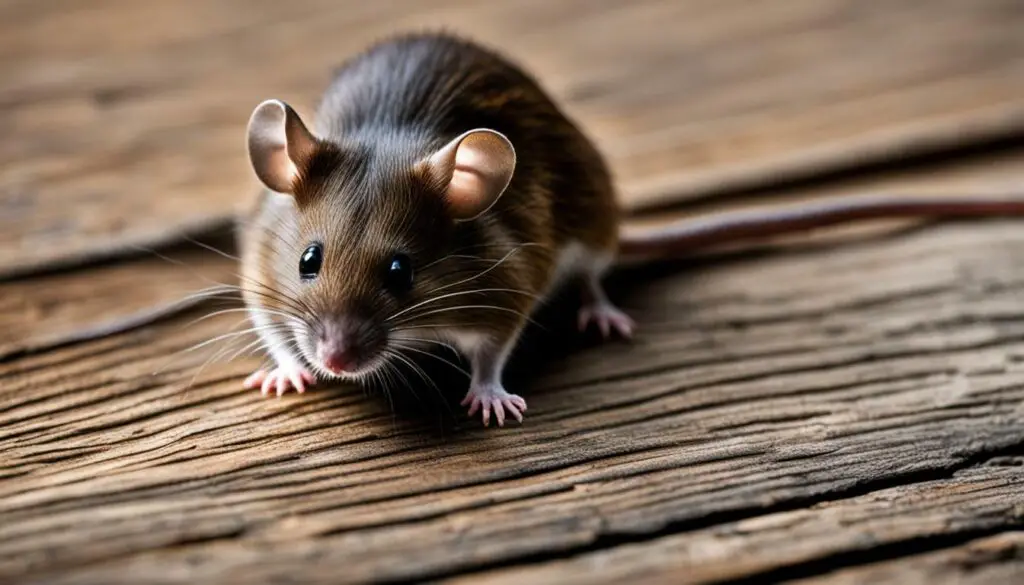
By implementing these preventive measures and considering professional pest control services when needed, you can protect your wood from the destructive chewing habits of mice. Actively addressing the issue of mice in your home will not only safeguard your property but also help ensure the safety and well-being of your household.
The Role of Professional Pest Control
When it comes to effectively controlling mice and protecting your wood, professional pest control services can play a vital role. Mice have a relentless drive to chew and gnaw, and they can quickly cause extensive damage to wooden structures in your home. Their ability to chew through various building materials, including wood, can lead to costly repairs and compromises the structural integrity of your property.
Professional pest control services have the expertise and tools necessary to effectively address mouse infestations and prevent further damage. They can conduct a thorough inspection of your property to identify potential entry points and recommend proactive measures to seal them off. By fortifying your home against mice, you can avoid the headache and expense of dealing with wood damages caused by their relentless chewing.
In addition to preventing mice from entering your home, professional pest control services can also employ targeted and safe methods to eliminate existing mouse populations. They have access to specialized baits, traps, and other control techniques that are more effective than DIY methods. With their knowledge of mouse behavior and habits, pest control professionals can strategically place these control measures to achieve maximum results.
| Benefits of Professional Pest Control Services |
|---|
| Expertise in dealing with mouse infestations |
| Thorough inspection and identification of entry points |
| Proactive measures to prevent further infestations |
| Safe and targeted control methods |
| Minimizes the risk of wood damages caused by mice |
| Peace of mind knowing professionals are handling the problem |
By enlisting the help of professional pest control services, you can have peace of mind knowing that experts are handling your mouse infestation. They will provide you with a comprehensive plan to address the issue and ensure the long-term protection of your wood and home. Don’t let mice chew through your peace of mind – trust the professionals to safeguard your property.
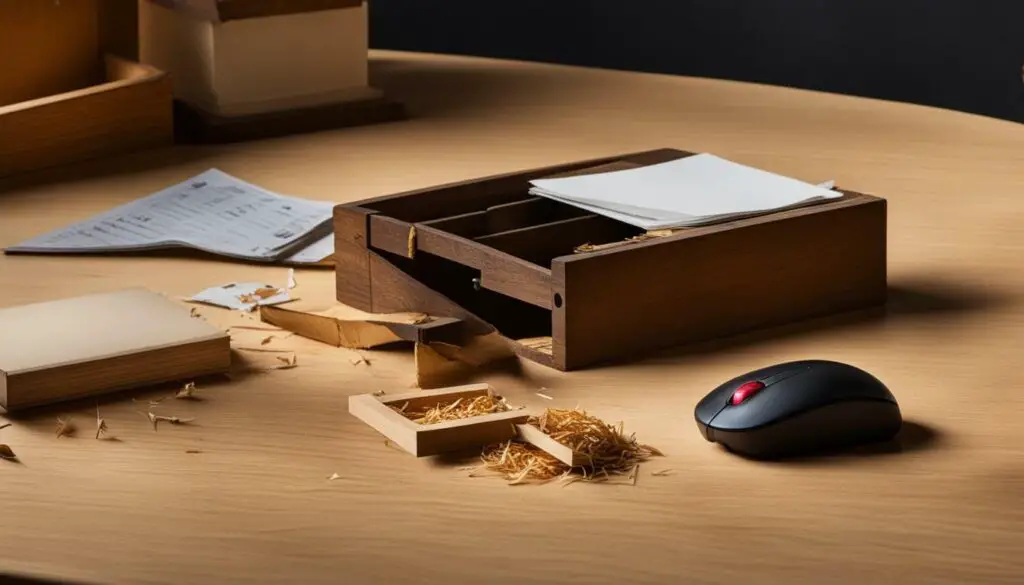
Now that you’re aware of the risks, it’s time to take action to safeguard your home from mice and their wood-chewing tendencies. The following tips and techniques will help prevent mice from damaging your precious wood surfaces:
- Seal all cracks and holes: Mice can squeeze through even the tiniest openings, so inspect your home for any gaps along windows, doors, and foundation. Use caulk or steel wool to seal these entry points and keep the critters out.
- Store wood properly: If you have firewood or wooden materials outdoors, make sure to keep them at least 20 feet away from your home’s perimeter. This distance will discourage mice from using the wood as a bridge to enter your property.
- Trim vegetation: Maintain a tidy yard by trimming tree branches and shrubs that are close to your home. Mice can use these as pathways to access your house.
- Keep food sealed: Store all food in airtight containers, including pet food. Mice are attracted to food sources and can chew through cardboard and plastic packaging.
- Remove clutter: Declutter your home, basement, and attic to eliminate potential nesting spots for mice. The less clutter, the fewer hiding places they’ll find.
- Set traps strategically: Place mousetraps along walls, in dark corners, and near any signs of mice activity. Use bait that mice find appealing, such as peanut butter or chocolate.
By implementing these preventive measures, you can significantly reduce the risk of mice chewing through your wood and causing costly damage. However, if you’re dealing with a severe infestation or need professional guidance, it’s always wise to seek help from a reputable pest control service. They have the knowledge and resources to effectively manage mouse infestations and protect your wood.
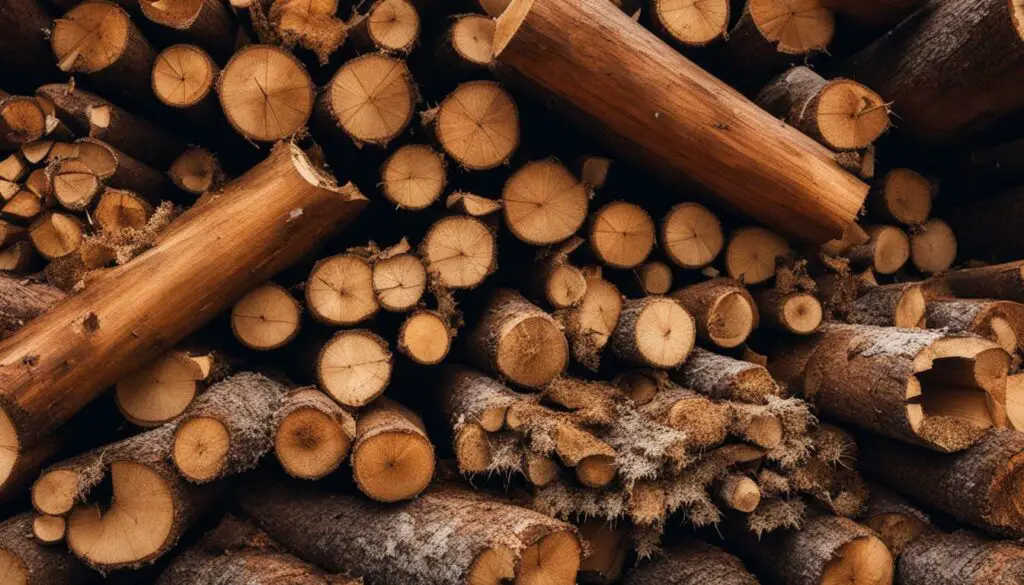
It’s essential to stay vigilant and take proactive steps to prevent mice from chewing through your wood. Regularly inspect your home’s exterior for any signs of damage or potential entry points. Remember, mice can fit through even the tiniest openings, so thorough sealing is crucial. Additionally, maintaining a clean and organized living environment reduces the chances of attracting mice to your home in the first place. By following these guidelines and seeking professional assistance when needed, you can ensure the protection of your home and wood surfaces from these destructive pests.
Conclusion
In conclusion, mice can indeed chew through wood due to their constantly growing incisors, but there are preventive measures you can take to protect your home.
Mice have front incisors that never stop growing, so they constantly gnaw and chew to keep their teeth filed down. This behavior can lead to significant damage to wooden structures in your home. However, by understanding their habits and behavior, you can greatly reduce the risk of mice causing extensive wood damage.
It is important to take proactive steps to prevent mice from entering your home in the first place. Start by sealing any holes or cracks in your walls, floors, and foundation. This can help eliminate potential entry points for mice. Additionally, consider using materials that mice are less likely to chew through, such as steel wool, to fill any gaps or openings.
Professional pest control services can play a crucial role in managing mouse infestations and protecting your home. They have the expertise and tools to identify and eliminate mice from your property effectively. They can also provide guidance on long-term prevention strategies to ensure that your home remains free from mice and the damage they can cause to wood and other materials.
FAQ
Can mice eat through wood?
Yes, mice can chew through wood to access food sources and create nesting sites.
What other materials can mice chew through?
Mice can also chew through plastic, vinyl, aluminum, and other building materials.
Can mice chew through steel wool?
Mice tend to avoid chewing through steel wool as it is a deterrent to them.
Can mice chew through wires?
Yes, mice can chew through wires, which can lead to electrical short circuits and potential house fires.
How can I prevent mice from entering my home?
It is important to seal holes and cracks in your home to prevent mice from entering. Professional pest control services can help manage mouse infestations.




